Calcium Gluconate Injection
100 mg/mL
10 mL Vial
Preservative Free
- Description
- Reviews (0)
- Store Policies
- Inquiries
Description
Calcium gluconate is a mineral supplement and medication derived from calcium salt of gluconic acid. Calcium is the most common cation and the fifth most abundant inorganic element in the human body. It is essential for the maintenance of the nervous, muscular, and skeletal systems, and for cell membrane and capillary permeability. Calcium’s role in building bones and supporting their health is well known, but it is also important for nerve conduction, blood coagulation, and electrical conduction in the muscular tissue of the heart.
Generally, calcium salts are used to treat or prevent calcium loss.1Calcium is used for the temporary control of irregular heartbeats (arrhythmias), while parenteral calcium is recommended for the treatment of life-threatening cardiac arrhythmias when associated with hyperkalemia, hypermagnesemia, and hypocalcemia. It can also be used in the event of cardiac arrest.
Calcium gluconate is usually not the preferred salt form for treating hypocalcemia, particularly in emergent situations. Usually, calcium gluconate is favored for moderate or mild asymptomatic hypocalcemia due to the lower risk for reactions at the fusion site. Calcium plays an important role in preventing osteoporosis in postmenopausal women.It is not practical as a dietary supplement due to the small concentration of elemental calcium contained in the tablets.
Calcium plays a crucial role in the function of the nervous, muscular, and skeletal system, providing structural integrity and support for individual growth. Bone constantly undergoes remodeling and turnover. Mineral release during the process of bone resorption guards hydrogen ions, while the formation of bone produces them. Therefore, bone serves as a calcium repository and as a pool for buffers and electrolytes.
Inhibition of bone resorption is primarily the function of the hormone calcitonin. The control of plasma calcium concentration is maintained by several other hormones, including thyroxine, parathyroid hormone, and calcitriol (1,25-dihydroxycholecalciferol). Calcium is metabolised throughout the body. It assists in heart function, blood coagulation, neuromuscular reactions and more.
Calcium gluconate can be administered intravenously, orally or intraosseously. Calcium is required by tissues throughout the entire body. The majority of calcium (98%) is stored in the bone. Continuous bone remodeling and turnover of the skeletal system releases calcium into the systemic circulation on a daily basis.
About 40% of calcium binds to plasma proteins and 10% is in chelated form. Roughly 50% of serum calcium is ionized. The body distributes the nonprotein-bound calcium to protein-poor areas of the body like the cerebrospinal and extracellular fluids. About 80% of calcium is excreted in feces and bile, while urinary excretion accounts for the remaining 20%. The kidneys absorb about 99% of filtered calcium with less than 1% excreted.
Three hormones – calcitonin, parathyroid hormone, and calcitriol – control calcium equilibrium. Androgens, estrogens, insulin, growth hormone, and thyroxine also contribute.
Calcium gluconate is contraindicated in patients with ventricular fibrillation and hypercalcemia.Additionally, calcium gluconate should be used with caution in patients with chronic kidney failure due to the increased risk of developing hypercalcemia.
Calcium gluconate injections contain aluminum. When calcium gluconate is used in patients with kidney impairment for an extended period of time, aluminum can reach toxic concentrations. Neonates are especially at risk for aluminum toxicity due to immature kidney function. Research shows that patients with kidney impairment, including newborns, who receive parenteral aluminum at rates greater than 4 to 5 micrograms per day may accumulate excess concentrations of aluminum. High concentrations of aluminum are associated with bone and central nervous system toxicity.
There is little data on the use of calcium gluconate during pregnancy. As such, it is difficult to determine a drug associated risk of adverse developmental outcomes. However, there is evidence that hypocalcemia can negatively affect both the mother and fetus during pregnancy.
Calcium is a natural component found in human breast milk. Currently, there is no data available regarding the effects of calcium gluconate on calcium concentrations in breast milk. Additionally, there is no data on how calcium gluconate affects milk production or its effects on the breastfed infant.
The toxic and inotropic effects of cardiac glycosides and calcium are synergistic. If these drugs are given together (especially when administered intravenously), arrhythmias may occur. In patients receiving cardiac glycosides, intravenous administration of calcium should be avoided; if necessary, it should be given slowly and in small amounts.
Calcium gluconate renders tetracycline antibiotics inactive. As such, patients should never consume these two drugs at the same time orally, nor should they be combined for parenteral administration.
Intravenous solutions containing various drugs are incompatible with calcium gluconate injections. Currently, published data is too limited and/or varied to permit generalization. For more specific information, a specialized reference should be consulted.
The use of calcium gluconate during cardiopulmonary resuscitation is not ideal, unless indications exist to offset electrolyte imbalances.Patients with digitalis toxicity should also avoid calcium gluconate, as it presents an increased risk of developing cardiac arrhythmias. Calcium gluconate and cardiac glycosides increase intracellular calcium, which can worsen digitalis toxicity. Therapy to treat cardiac glycosides, however, does not preclude the use of calcium gluconate.
Quickly administering a calcium gluconate injection may increase a patients’ risk of serious health problems, including hypotension, cardiac arrhythmias, syncope, vasodilation, and cardiac arrest. To prevent these reactions, it’s important to dilute the calcium gluconate and infuse it slowly. Never give calcium gluconate via intramuscular or subcutaneous administration, as it may result in sloughing or severe necrosis.
Providers should also take care to avoid accidental injection or extravasation into the perivascular tissues. If extravasation occurs or manifestations of calcinosis cutis are present, discontinue IV administration promptly and treat as needed.Patients with hyperparathyroidism, vitamin D toxicity, and sarcoidosis may benefit from treatment with calcium gluconate, but use with caution. All three of these conditions increase the risk of hypercalcemia.
Caution should also be used in patients with excess calcium in the urine (hypercalciuria) or kidney stones.
Store this medication at 68°F to 77°F (20°C to 25°C) and away from heat, moisture and light. Keep all medicine out of the reach of children. Throw away any unused medicine after the beyond use date. Do not flush unused medications or pour down a sink or drain.
1.Calcium gluconate 10% injection solution package insert. Lake Zurich, IL: Fresenius Kabi USA, LLC; 2018 July.
2.Vanden Hoek TL, Morrison LJ, Shuster M, et al. Part 12: Cardiac arrest in special situations: 2010 American Heart Association guidelines for cardiopulmonary resuscitation and emergency cardiovascular care. Circulation 2010;122:S829-861.
3.Lavonas EJ, Drennan IR, Gabrielli A. Part 10: special circumstances of resuscitation: 2015 American Heart Association Guidelines for Cardiopulmonary Resuscitation and Emergency Cardiovascular Care. Circulation 2015;132(Suppl 2):S501-S518.
4.Kraft MD, Btaiche IF, Sacks GS, et al. Treatment of electrolyte disorders in adult patients in the intensive care unit. Am J Health Syst Pharm 2005;62:1663-1682.
5.Kleinman ME, Chameides L, Schexnayder SM, et al. Part 14: pediatric advanced life support: 2010 American Heart Association guidelines for cardiopulmonary resuscitation and emergency cardiovascular care. Circulation. 2010;122:S876-908
6.Broner CW, Stidham GL, Westenkirchner DF, et al. A prospective, randomized, double-blind comparison of calcium chloride and calcium gluconate therapies for hypocalcemia in critically ill children. J Pediatr 1990;117:986-989.
7.Anger KE, Belisle C, Colwell MB, et al. Safety of compounded calcium chloride admixtures for peripheral intravenous administration in the setting of a calcium gluconate shortage. J Pharm Pract 2014;27:474-477.
8.de Caen AR, Berg MD, Chameides L. Part 12: Pediatric Advanced Life Support: 2015 American Heart Association Guidelines Update for Cardiopulmonary Resuscitation and Emergency Cardiovascular Care. Circulation 2015;132:S526-S542.
9.Reid IR, Ames RW, Evans MC, et al. Effect of calcium supplementation on bone loss in postmenopausal women. N Engl J Med 1993;328:460-4.
10.Straub DA. Calcium supplementation in clinical practice: A review of forms, doses, and indications. Nutr Clin Pract 2007;22(3):286-296.
11.Roberts KE. Pediatric fluid and electrolyte balance: Critical care case studies. Crit Care Nurs Clin N Am 2005;17:361-373.
12.Umpaichitra V, Bastian W, Castells S. Hypocalcemia in children: Pathogenesis and management. Clin Pediatr (Phila) 2001;40(6):305-312.
13.Emkey RD, Emkey GR. Calcium metabolism and correcting calcium deficiencies. Endocrinol Metab Clin North Am 2012;41(3):527-556.
14.Calcium gluconate tablets package insert. Eatontown, NJ: West-Ward Pharmaceuticals Corp.; 2017 Mar.
15.Reber PM, Heath H, III. Hypocalcemic emergencies. Med Clin North Am 1995;79:93-106.
16.Calcium chloride 10% injection syringe package insert. Lake Forest, IL: Hospira, Inc.; 2009 Nov.
17.Hsu SC, Levine MA. Perinatal calcium metabolism: physiology and pathophysiology. Semin Neonatol 2004;9(1):23-36.
18Burke RR, Rybicki BA, Rao DS. Calcium and vitamin D in sarcoidosis: how to assess and manage. Semin Respir Crit Care Med 2010;31:474-484.
Be the first to review “Calcium Gluconate Injection”
General Inquiries
There are no inquiries yet.


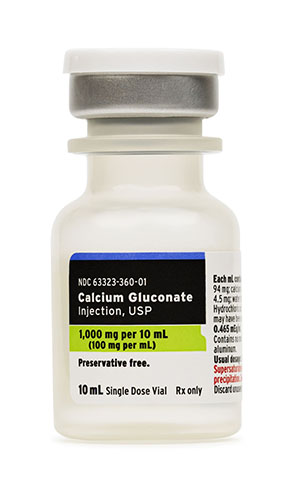

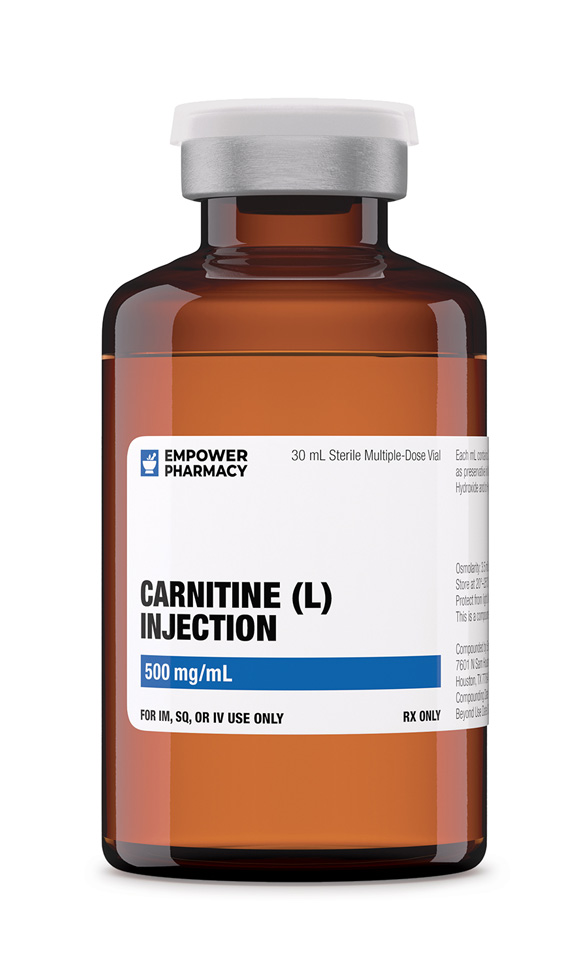
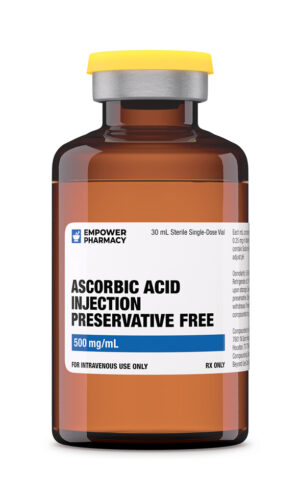
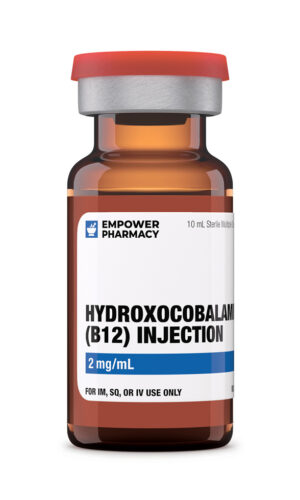
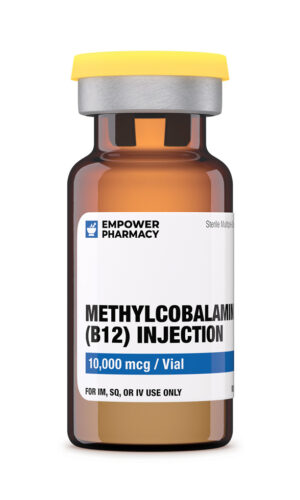
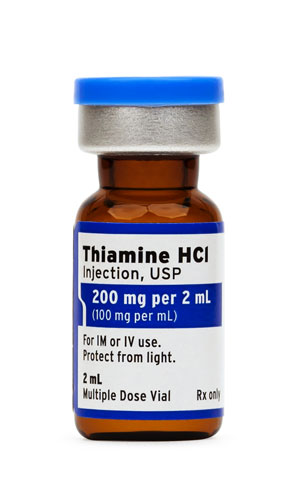
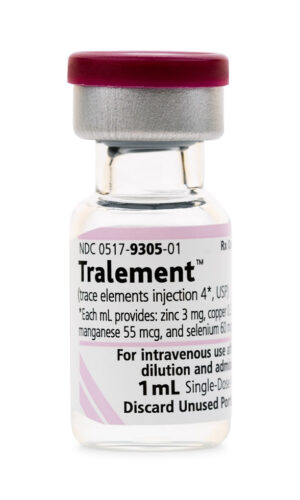
Reviews
There are no reviews yet.